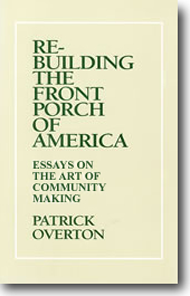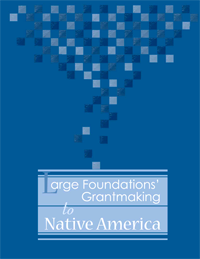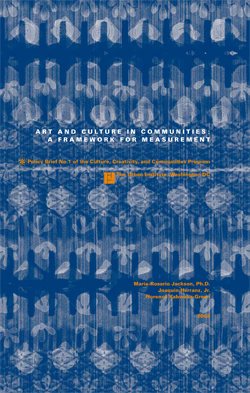Arts and Community Development
This handbook describes how partnerships between local cultural agencies, schools, businesses, and other sectors of the community can make a positive impact on arts education. Learn how 11 communities built their local partnerships, and how you can adapt similar programs to your community.
40pp, saddle-stitched paper (1995, Americans for the Arts' Institute for Community Development and the Arts)
Available online from Americans for the Arts
Read More...
This important new study, released in June 2002, demonstrates conclusively that the nonprofit arts industry has a significant economic impact on local and national economies. And, for the first time, in addition to spending by arts organizations, information has been gathered on event-related spending by arts audiences. Americans for the Arts worked with 91 community partners from across the U.S. to collect expenditure data for this study.
Read More...
This book takes a fresh and positive approach to understanding the arts as essential for creating authentic and sustained community. While it focuses on development in rural and small communities, it is an inspiration for individuals and organizations large and small.
160pp, paperback (1997, PrairieSea Press)
Read More...Ralph Smith, the 2007 Conference Chairman, issued a challenge in his welcome message – “that all who attend will leave with renewed energy, capacity and resolve to make a positive contribution toward meeting the challenges of our time.”
Read More...2010, 72 pages, The Urban Institute, 2100 M Street NW, Washington, D.C., 20037, (202) 833-7200 http://www.urban.org
Download:
Read More...
At a time when public support of the arts faces a range of challenges, state arts agencies could use a framework to help them better serve the arts community and engage more people in the arts -- thereby elevating these agencies' public value.
Read More...Council on Foundations Annual Conference, May 1, 2001
Craig McGarvey, The James Irvine Foundation
From a position of received privilege, how should one behave so that it might be put to productive use as people are learning to get better at their work? This is a central question facing philanthropy, and it figured centrally in preparations for today. How to say something appropriate and helpful under such extraordinary circumstances?
There was the problem that no single foundation's body of work could possibly measure up to being singled out.
Read More...Native America at the new Millennium is a Ford Foundation-funded collaboration by the Harvard Project, Native Nations Institute, and First Nations Development Institute that serves as a primer on contemporary American Indian affairs. NANM addresses topics as wide-ranging as tribal government, non-profit organizations, political activism, economic development, housing, welfare, health, arts, and media.
Read More...
This report presents key findings from a study of large foundations' giving to Native American causes and concerns. It addresses the real dollar value of grantmaking from 1989-2002, top donors and top recipients, and the general purposes to which grants are targeted. The pamphlet concludes with a discussion of what the data imply (and in particular, what action they ought to motivate) for foundations, Native-serving nonprofits, and tribal governments.
Read More...The story of how the Boston Foundation became the first community foundation to develop and implement policy on exercising its proxy votes on investments to advance its mission.
Posted courtesy of Stanford Social Innovation Review
Download:
![]() What Works (5.9Mb)
What Works (5.9Mb)

